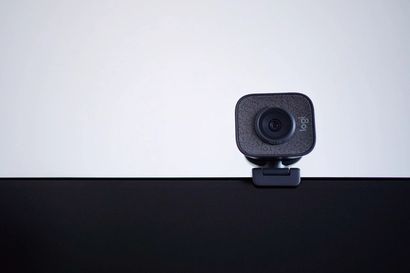About a month or two ago,I found myself bobbing about Cannes Harbour, aboard a bespoke Princess yacht.
Inspecting everything from the cockpit to the cabins, I discovered the 35-metre vessel was stuffed to the gunnels with aspiring captains, each of whom was spending their sunny afternoon milling about the boat – all with an eye to buy.
One of my fellow guests, from deep inside the walk-in wardrobe, called out to our host: ‘So does somebody already own this yacht?’
‘You won’t find a Princess yacht in the world that doesn’t have an owner,’ came the reply. ‘Every boat is sold before it’s built.’
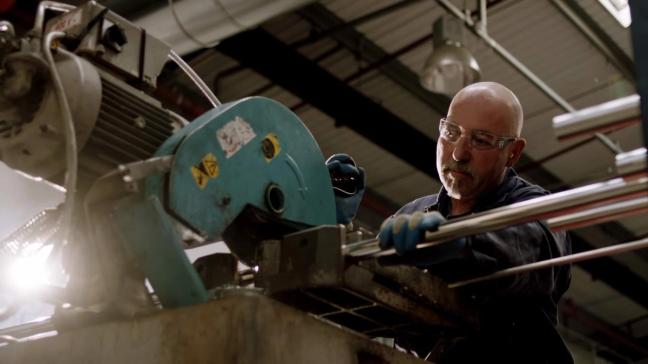
Kiran Jay Haslam, Marketing Director for the Plymouth-based boat builders, goes on. ‘Part of what makes Princess unique is how involved with the design process the customer is – your boat can’t be bespoke if it’s already been built.’
And there is that word again: bespoke. Seemingly plucked from the same tree as ‘artisan’ and ‘boutique’, it is a word that has, of late, pervaded sales pitches and brand mission statements alike, with the result that it has been reduced to a buzzword with no clear definition at all.
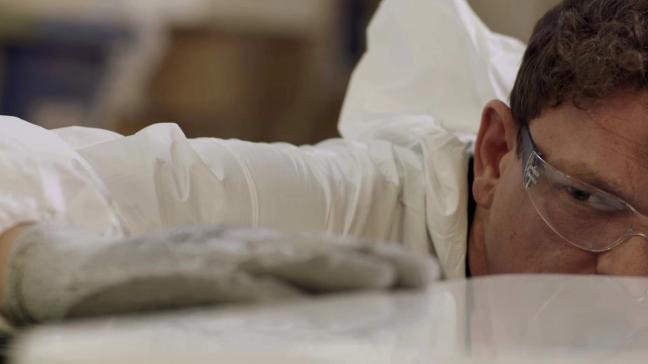
So, I ask Haslam, what does ‘bespoke’ mean to Princess?
‘It’s not simply a case of the customer wanting the most outlandish thing that no-one else has,’ he explains. ‘There is usually a utilitarian reason behind it.
‘They want something that fits with their lifestyle,’ Haslam continues. ‘They might love getting straight out of the water and going straight over to the galley to get a mango and slice it up, and in that case, they’ll need the galley to be in a slightly different position to where you might expect, so you don’t have to walk across carpet to get to it.
‘In our minds, we can do virtually anything as long as it fits within the confines of the hull and the naval architecture – which we would never change, as that’s what makes a Princess a Princess. But most everything else can be designed, rearranged and adapted to the customer’s taste.’

To Princess, who have 19 base models – each with a unique hull and performance – bespoke means being able to offer practicality above all else. Haslam even tells me that, until recently, the company only saw a high level of bespoke requests from customers buying boats of 82 ft and above.
Now, however, the yachtmakers are starting to get requests for customisation in the much smaller boat sizes.
‘People want to put more of themselves into products,’ says Haslam, ‘There’s always going to be a pattern, a structure, but like choosing a different type of marble for your bathroom, leather for your upholstery or wood for your dashboard, you make it your own.’
Several weeks later, I find myself staring at such a custom dashboard, and being pushed back into bespoke leather upholstery by the force of an ‘Overfinched’ Range Rover Sport engine.

I can hardly hear my driver, Overfinch Sales Executive Andrew Pitchford, over the angry burble of the Sport’s custom open-valve exhaust system, but somewhere under the roar, he is explaining what the term ‘bespoke’ means to the 41-year-old car enhancement company.
There’s definitely a rising demand for bespoke – we’re now creating around 300-350 customised vehicles every year
‘It’s about standing out,’ says Pitchford, winding through St John’s Wood. ‘And there’s definitely a rising demand for bespoke – we’re now creating around 300-350 customised vehicles every year.
‘The number of elements you can have customised is increasing too,’ he continues, shifting gear. ‘People are looking to showcase their individuality these days, looking to express their personal tastes through their belongings more and more – and some are spending £100,000 above the car’s list price to “Overfinch” their vehicle and achieve that.’
Overfinch, who can tailor everything about your Range Rover – bumpers, door sills, veneers, embroidered headrests and more – believe that the appeal of bespoke stems not just from customising your vehicle, but also from improving it.
As such, the car enhancers use only the best materials. Top grade carbon fibre for the bodywork, Bridge of Weir leather for the interiors, woods from shadow walnut to Macassar ebony for the dash and lettering sourced from Birmingham’s Jewellery Quarter. One client, Pitchford tells me, has just spent £12,000 on paint alone.
‘People are motivated differently,’ rationalises the sales executive, ‘and although some of our clients do use our bespoke service to create something that will slip under the radar, many just want to turn heads and be unique.’
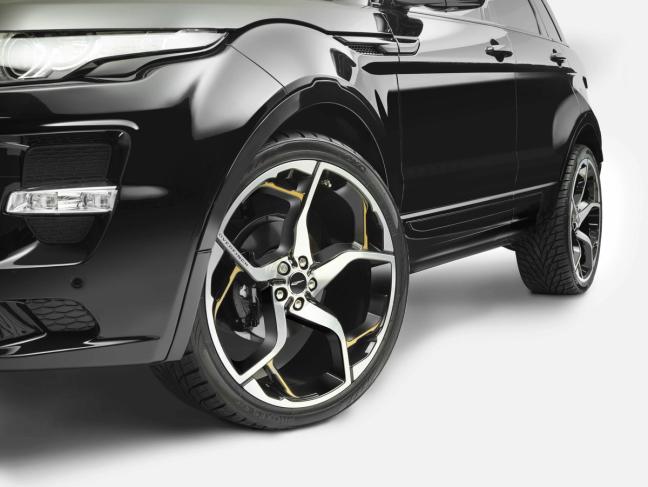
Pitchford, who worked for Princess Yachts before he moved to Overfinch, tells me that although boat buyers tend to go bespoke for the practicality and involvement in the design and building process, those seeking customised Range Rovers are much more interested in ‘the big reveal’.
‘We have three covered Overfinch transporters going up and down the country,’ says Pitchford, pulling the black Range Rover over, ‘and they’re at the centre of our red carpet delivery service. We do all the handovers ourselves. The truck arrives at your house, your Overfinch comes off the back, and we set it up for you. The process may not be the same as that of buying a bespoke yacht, but it is bespoke nonetheless.
‘With wealth comes a desire for exclusivity,’ Pitchford continues, settling back into the black leather. ‘You could spend thousands on, say, a really expensive watch, but walk down the street, see 15 other people wearing that same watch and you’ll be disappointed – it won’t feel as special any more. And that’s where bespoke comes in.’
One week later, and on the other side of London, I hear Pitchford’s hypothetical watch scenario come to life.

‘My father gave me this holy grail of a watch,’ recalls timepiece tailor George Bamford, sitting in the design room of his Mayfair headquarters. ‘It was a Rolex Daytona, and I was so proud of it. I’d show it off to everyone.
‘But then,’ his brow furrows, ‘one night I turned up to a dinner party – and everybody had the exact same watch on. It destroyed this notion of speciality I had.’
Bespoke doesn’t have to mean building something from scratch
And so began Bamford Watch Department. George Bamford began customising watches almost 14 years ago when he modified his own. Using a scratch-resistant coating borrowed from his father’s construction company, JCB, the now 36-year-old altered his Rolex by painting it black. As he points out, bespoke doesn’t have to mean building something from scratch – instead, like Overfinch, it can be taking something already exceptional and tailoring it to your liking.
‘As you can see,’ says Bamford, gesturing around the room, ‘there are no watches on display for sale, because it’s all about our customer’s imagination. The watch they want is still in their head.’
And with a slogan of ‘If you can imagine it, we can create it’, BWD love a challenge. From the case to the face to the hands to the crown, Bamford customises watches including Rolex, Patek Philippe and Tag Heuer – to name but a few. Gun engravers craft beautiful straps, designers help you match colours and technicians assemble the watches in-house.
But why does Bamford think his customers find customisation so appealing?
I definitely still think the concept of luxury as we knew it has gone
‘Several years ago, I said, “luxury is dead,”’ answers the businessman. ‘Now, I may have been naïve in saying that at the time, but I definitely still think the concept of luxury as we knew it has gone.
‘I think today, luxury is about personalising products to you. We all have our own style. We don’t want to be clones, and so bespoke has risen because everything else is produced en masse – as cheaply as possible. Products may even be expensive, but they’re no longer exclusive.
‘I believe in bespoke,’ Bamford exclaims, gesturing at countless images of past customers’ watches on the wall behind him. ‘I could wax lyrical about it, because I truly believe that if you have the means to project your own individual style, you should.
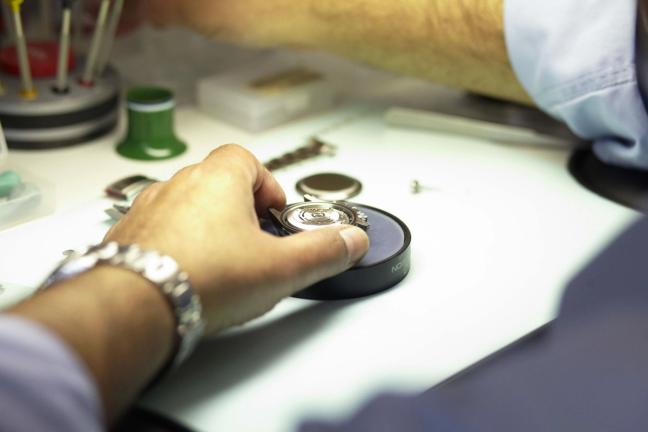
‘I put my watch, my tie and my shirt on every morning for me. I want to feel good. I want to know that my shirt is going to fit me and feel personal – so I get my shirts made. And that’s the key thing about bespoke,’ he says, adjusting his collar. ‘It doesn’t just give you individuality, it gives you comfort.’
Two days earlier, I had watched Turnbull & Asser’s bespoke pattern cutter, George Atanasias, adjust a similar collar – but this time it was cut from brown paper and lay on a craftsman’s bench in the shirtmaker’s Bury Street store.
I asked Atanasias how he would define the term.
‘Bespoke?’ the cutter repeated back to me, as his large shears sliced through the brown paper pattern. ‘I think it’s progress. Over the last few years, people have had their eyes opened to the possibilities of bespoke products. More information is available online about what people wear and how clothes are made, and the public are waking up to the fact that they can get things customised in almost every way.
‘Many of our customers have never worn a bespoke shirt before,’ Atanasias adds, pulling out a pencil and making a minuscule change to his design. ‘But when they do, they realise the difference.’
Turnbull & Asser, Royal Warrant Shirtmakers, began their bespoke section almost sixty years ago. But, whereas the clientele at that time comprised flamboyant celebrities, they have since seen the everyman increasingly take advantage of the service.
Bespoke goes that little bit further again – it goes beyond measurements and into figuration and posture
‘Now we see a whole range of customers,’ says team member Scott Martin, ‘and we help each and every one decide what they need. We take all of the measurements you’d expect from a made-to-measure, but bespoke goes that little bit further again – it goes beyond measurements and into figuration and posture, things that made-to-measure can’t always iron out.
‘With tailored, there is an existing pattern in your size. With bespoke, we actually cut your own individual pattern. So if you have a drop shoulder, or a stoop, or one arm longer than the other, we will compensate for that during the process.’
And what a process. With over 1,000 fabrics available – from Egyptian cotton and Oxford cloth to herringbone and twill, 12 collar styles, countless cuffs and optional embroidery – the possibilities are almost endless. You can alter your fit, your button spacing, even the style of your hem, and cutters like George will ensure that your shirt ends up as individual as you.
‘Bespoke still isn’t a huge industry,’ says the pattern cutter, poring over his paper, ruler in hand. ‘But it is an art. It’s a natural progression from other tailoring. Your suit is bespoke, so why not your shirt? And, of course, suits are becoming even more customisable all the time – just go to Savile Row and you’ll see.’
And see I did. Visiting 167-year-old tailoring brand Huntsman on the iconic street, it soon showed beyond doubt that ‘bespoke’ is not simply a buzzword – but rather the latest level of luxury. Customisation has gone through the roof at Huntsman and, as Co-Head Cutter Dario Carnera tells me, it shows no sign of letting up.
‘People are only now becoming aware that they can have what they want,’ says the cutter, pulling out stitches from a waistcoat at his workstation. ‘And that’s really got their minds ticking over.
‘We have many different requests, and we come up with loads of solutions for people. For example, I’ve got a customer who wanted somewhere convenient to store his card holder, so we made him a little pocket within his lapel.
‘People also Google pictures of things these days,’ Carnera continues, whipping a tape measure from around his neck, ‘and bring them in asking, “can you do this for me?”’
On Savile Row since he was a teenager, the cutter says that bespoke has brought about a dramatic change in sartorial attitudes.
‘What happened, to a large extent, was that the Eighties and Nineties were driven by brands – people wearing Armani suits with designer labels. But then people realised that you can get something cut and made exclusively for you, for a similar price, that will last longer and fit much better.’
With 60-80 man hours spent on each suit alone, and materials from English wool to Scottish tweed on the table, the house belief of Huntsman is that bespoke is a refinement of tailoring.
‘The whole process is about the individual,’ says Carnera, rifling through a rack of distinctively patterned jackets. ‘From advising them and measuring them to cutting their pattern. And I wouldn’t say that our customer base has grown, as such, but it certainly has changed,’ he continues. ‘The aristocracy has shrunk to a degree, so we’ve shifted towards the everyman.
‘But whoever comes in, we want to make this an enjoyable experience for them. Because, although some customers may have a full wardrobe of clothes from us, others just come in to get one suit – something they might have been saving for a significant part of their lives to afford.
Bespoke is just as much about the process as it is about the final product
‘So we want to make their experience as special as we can – because bespoke is just as much about the process as it is about the final product.’
And, as simple as it may sound, Carnera’s succinct definition of bespoke is the best I come across.
For be it the pearlescent paint of Overfinch or the custom case of your Bamford watch, the cuffs of your tailored shirt or the deck plan of your Princess yacht, the one constant across all modern bespoke industries is the people who steer the process. From Kiran Jay Haslam and Andrew Pitchford to Georges Bamford and Atanasias, those who deal in the custom-made make buying bespoke an experience in itself. For while luxury can be found on the peg, service such as this cannot.

Become a Gentleman’s Journal Member?
Like the Gentleman’s Journal? Why not join the Clubhouse, a special kind of private club where members receive offers and experiences from hand-picked, premium brands. You will also receive invites to exclusive events, the quarterly print magazine delivered directly to your door and your own membership card.

